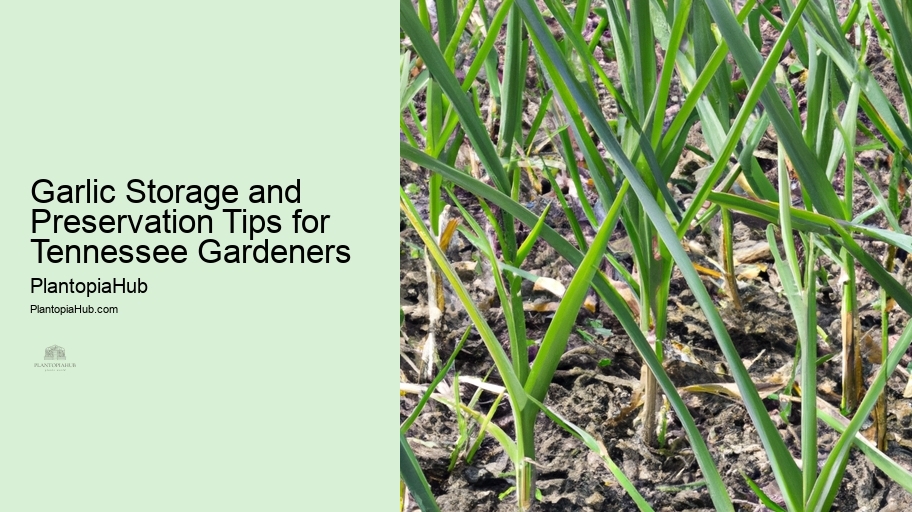

Organic farming practices are gaining popularity in Tennessee, and they can be particularly beneficial for garlic cultivation. Start by selecting organic garlic varieties and using organic soil amendments like compost and aged manure. Avoid synthetic pesticides and fertilizers, opting for natural alternatives.
Employ crop rotation to prevent soil depletion and reduce the risk of disease. Implement mulching to conserve moisture and suppress weeds without the use of chemicals. These practices not only protect the environment but also produce healthier garlic bulbs.
In conclusion, embracing organic farming practices for garlic in Tennessee aligns with sustainable and environmentally friendly principles.
Companion planting is an effective strategy to improve garlic growth in Tennessee. Consider planting garlic alongside companion plants like basil, chamomile, or chamomile.
Another excellent choice is planting garlic near strawberries, which can benefit from the natural pest-repelling properties of garlic. Companion planting not only boosts garlic health but also maximizes space utilization in your garden.
To sum up, exploring companion plants is a smart strategy for enhancing garlic growth in Tennessee. It's a natural and eco-friendly way to protect your crop and improve overall garden productivity.
Tennessee's winters can be unpredictable, making it essential to protect your garlic crop from freezing temperatures. Consider applying a thick layer of mulch, such as straw or leaves, around your garlic plants in late fall. This mulch acts as insulation, preventing the soil from freezing and protecting the garlic bulbs.
In extremely cold regions, consider using row covers or cloches to shield your garlic from frost. Ensure adequate airflow to prevent condensation, which can lead to mold and rot.
In conclusion, implementing winter protection measures is crucial for preserving your garlic crop in Tennessee.
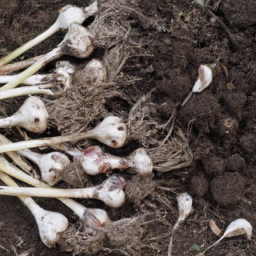
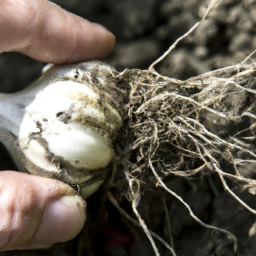
Crop rotation is a smart practice for Tennessee garlic farmers. By rotating your garlic with different crops each season, you can reduce the risk of soilborne diseases and pests. This strategy also helps maintain soil fertility and structure.
Consider planting garlic in a different section of your garden or farm each year to prevent the buildup of garlic-specific diseases. Crop rotation promotes healthier garlic plants and ultimately leads to better yields.
In conclusion, implementing crop rotation offers numerous benefits for Tennessee garlic farmers. It's a sustainable practice that contributes to long-term garlic crop success.
Sustainable Agriculture PracticesMulching plays a vital role in garlic farming in Tennessee. Applying a layer of mulch, such as straw or leaves, around your garlic plants helps conserve soil moisture, suppress weeds, and maintain consistent soil temperatures. Mulch also protects garlic bulbs from winter frost.
To mulch effectively, spread a 3-4 inch layer around your garlic rows after planting. Avoid piling mulch directly onto the garlic stems. Mulch should be replenished as needed throughout the growing season.
In conclusion, utilizing proper mulching methods for garlic beds in Tennessee is essential for healthy garlic growth. It's a simple yet effective technique that can significantly impact your harvest.
Soil Types in Tennessee
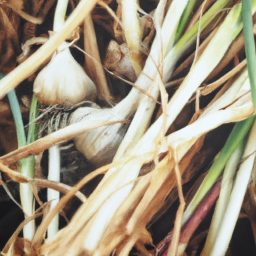
Recognizing and addressing garlic diseases promptly is crucial for Tennessee farmers. Common diseases include white rot, rust, and botrytis. Regularly inspect your garlic plants for yellowing leaves, lesions, or moldy growth.
To manage diseases, practice good sanitation by removing infected plants and practicing crop rotation.
In conclusion, identifying and managing garlic diseases is a vital aspect of successful garlic farming in Tennessee. A proactive approach to disease prevention and management can safeguard your crop.
To maximize garlic yield in Tennessee, follow these expert tips and techniques. Plant garlic in well-draining soil with full sun exposure, ensuring proper spacing and planting depth. Provide consistent moisture and fertility throughout the growing season.
Additionally, trim garlic scapes to divert energy to bulb development and remove any competing weeds.
In conclusion, implementing these expert tips and techniques can lead to exceptional garlic yields in Tennessee. A combination of proper care, attention to detail, and experience will help you achieve the best results.
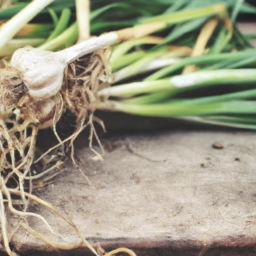
Crop insurance is essential for garlic farmers in Tennessee because it provides financial protection against unforeseen events that can impact crop yields, such as adverse weather conditions or crop failures. By investing in crop insurance, garlic farmers can secure their income and minimize potential losses, ensuring financial stability and peace of mind during challenging seasons.
Creating a customized garlic planting calendar for your Tennessee location involves considering factors like frost dates, local climate variations, and the garlic varieties you plan to grow. Start by determining the average date of the first fall frost and work backward to establish planting dates. It's important to align your calendar with your specific microclimate and garlic variety requirements, ensuring the best timing for planting and harvesting.
To protect your garlic crop from winter frost in Tennessee, consider applying a thick layer of mulch, such as straw or leaves, around your garlic plants in late fall. This mulch acts as insulation, preventing the soil from freezing and safeguarding the garlic bulbs. In extremely cold regions, you can also use row covers or cloches to provide additional frost protection. Be sure to maintain proper airflow to avoid condensation, which can lead to mold and rot.